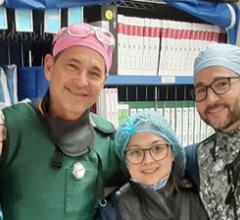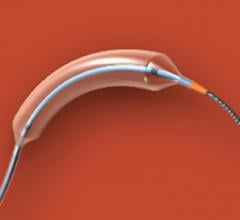
April 24, 2019 — Orchestra BioMed Inc. has secured Breakthrough Device designation by the U.S. Food and Drug Administration (FDA) for its Virtue Sirolimus-Eluting Balloon for the treatment of coronary in-stent restenosis (ISR).
Breakthrough Designation is granted to certain medical devices and device-led combination products that provide for a more effective treatment of life-threatening or irreversibly debilitating diseases. It enables manufacturers to provide patients and healthcare providers with timely access to medical devices by expediting their development, assessment and review. Benefits of this designation include frequent interactions and feedback from FDA during the premarket review phase. Through this program, Orchestra BioMed can expect prioritized review of its submission for Virtue SEB.
“In Virtue SEB, we finally have a therapeutic innovation that truly warrants breakthrough designation for the treatment of coronary ISR, a particularly challenging condition for which available treatment options are limited,” commented Dean Kereiakes, M.D., FACC, FSCAI, medical director of The Christ Hospital Heart and Vascular Center and professor of clinical medicine at The Ohio State University. “The unique design of Virtue SEB provides a reliable way to apply the proven anti-proliferative, anti-restenotic benefits of sirolimus during balloon angioplasty without the potential hazards of a permanent metal implant or a balloon coating that may produce downstream particulates and micro-emboli. Clinical results at three-year follow-up with Virtue SEB in ISR are very promising and I am very much looking forward to utilizing this exciting new technology in clinical trials in the U.S.”
Virtue SEB is a novel, first-in-class drug/device combination product that delivers sustained-release bioabsorbable nanoparticle-encapsulated sirolimus directly to the artery during balloon angioplasty without the need for a coating. The device’s ability to reliably deliver sirolimus via bioabsorbable particles directly to the artery with an elution profile comparable to commercially available drug-eluting stents has been demonstrated in extensive non-clinical studies published in a peer-reviewed journal. Virtue SEB is the first and only non-coated sirolimus-eluting angioplasty balloon system to show promising clinical results in patients with coronary ISR, according to Orchestra BioMed.
Coronary ISR, the reclogging of an artery following the implant of a drug-eluting or bare metal stent, represents over 10 percent of total interventional cardiology procedures according the American College of Cardiology’s National Cardiovascular Data Registry (NCDR)1. FDA-approved treatment options, such as plain balloon angioplasty and brachytherapy, are limited and offer subpar clinical outcomes. Juan Granada, M.D., associate professor of medicine at the Columbia University College of Physicians and Surgeons and president and CEO of Cardiovascular Research Foundation, presented three-year clinical results with Virtue SEB from the Sirolimus Angioplasty Balloon for In-Stent Restenosis (SABRE) Trial at the Transcatheter Cardiovascular Therapeutics (TCT) 2018 in San Diego. In the SABRE trial, Virtue SEB demonstrated excellent efficacy and safety performance in a very challenging ISR patient population with predominantly long, diffuse lesions within stents that had been implanted, on average, nearly four years prior to the study enrollment. The per-protocol primary safety and efficacy endpoint results of the study were as follows:
-
0 percent major adverse cardiac events (MACE) in hospital and at 30-day follow-up;
-
0.12 mm late lumen loss (LLL) at six-month angiographic assessment; and
-
5.6 percent target lesion failure (TLF) at three years.
For more information: www.orchestrabiomed.com
Reference
1. Journal of the American College of Cardiology Sep 2018, 72 (13 Supplement) B50-B51; DOI: 10.1016/j.jacc.2018.08.1220


 June 13, 2024
June 13, 2024 









